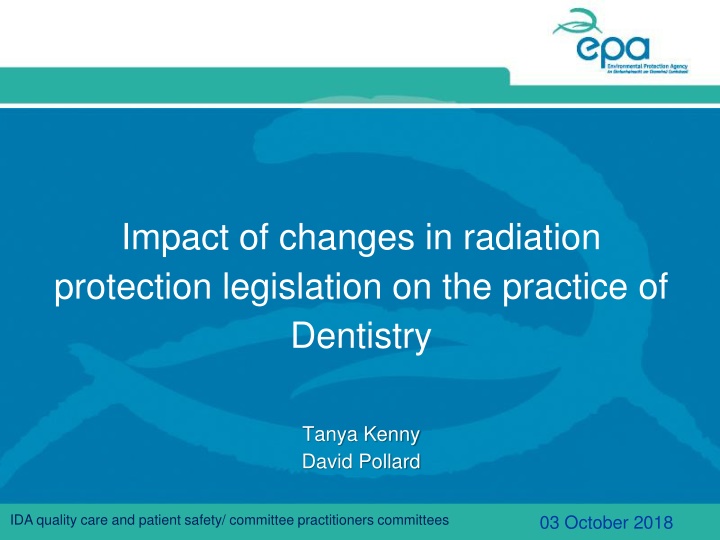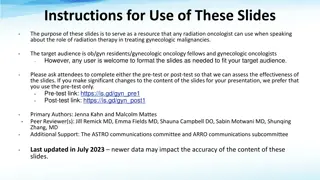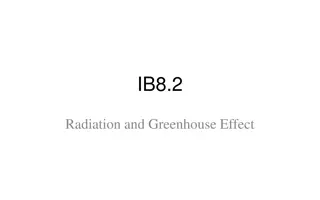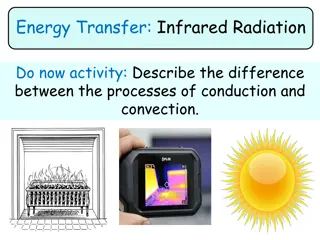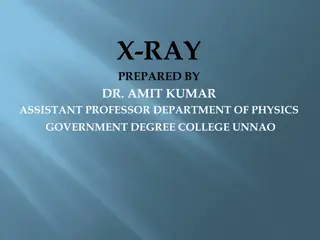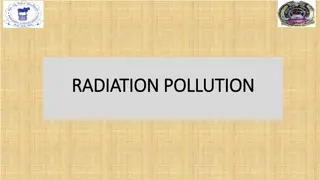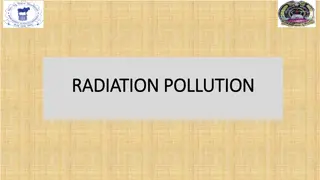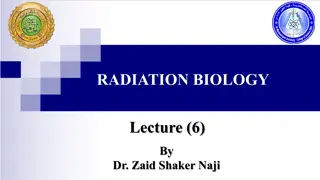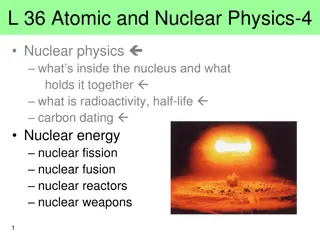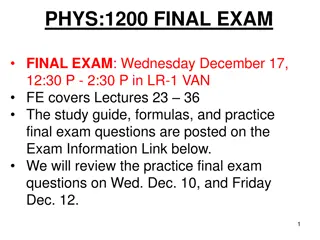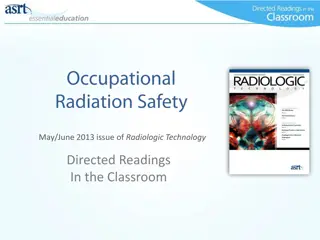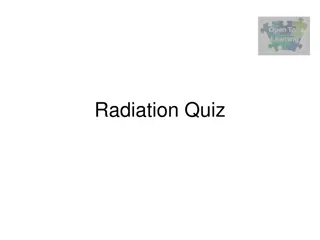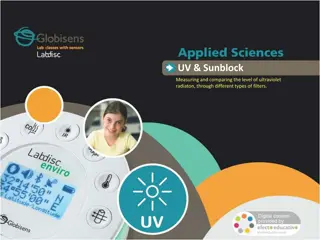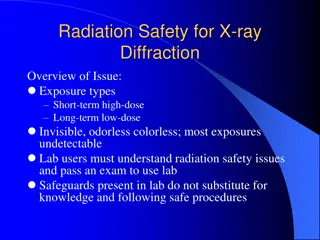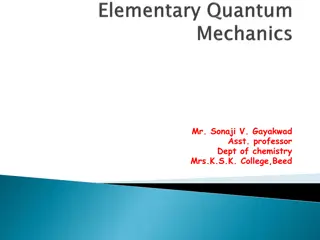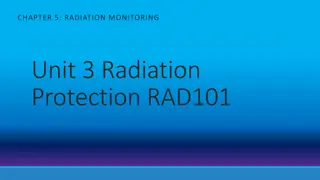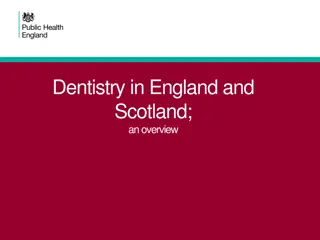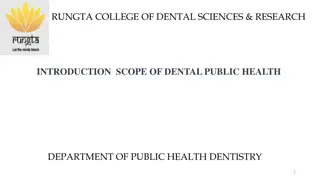Impact of Changes in Radiation Protection Legislation on Dentistry Practice
Changes in radiation protection legislation are affecting the practice of dentistry, particularly in areas such as graded authorization, updated dental codes of practice, and enforcement of patient protection requirements. The European Directive and transposition of regulations play key roles in ensuring compliance with Basic Safety Standards. The shift towards graded authorization, licensing vs. registration, and clearer delineation of roles for radiation protection advisors and officers are some of the notable differences being observed. Overall, these changes are aimed at enhancing patient safety and quality care in dental settings.
Download Presentation

Please find below an Image/Link to download the presentation.
The content on the website is provided AS IS for your information and personal use only. It may not be sold, licensed, or shared on other websites without obtaining consent from the author.If you encounter any issues during the download, it is possible that the publisher has removed the file from their server.
You are allowed to download the files provided on this website for personal or commercial use, subject to the condition that they are used lawfully. All files are the property of their respective owners.
The content on the website is provided AS IS for your information and personal use only. It may not be sold, licensed, or shared on other websites without obtaining consent from the author.
E N D
Presentation Transcript
Impact of changes in radiation protection legislation on the practice of Dentistry Tanya Kenny David Pollard IDA quality care and patient safety/ committee practitioners committees 03 October 2018
Agenda Why is the legislation changing What this means for Dentists Graded Authorisation Updated dental code of practice What will happen next
European Directive Irish regulations come directly from the European Union Basic Safety Standards (BSS) Directive The BSS is updated approximately every 15 to 20 years in light of scientific development, evolution of international norms and regulatory experience. The 2013 BSS incorporates the Medical Exposures Directive and so covers protection of: workers, public and patients.
Transposition Separate regulations covering: Occupational & public - responsibility of EPA Patient protection - responsibility of HIQA. Occupational & public regulations awaiting signature. Patient protection regulations aspects still under consideration by DoH. Transposition was due to have been completed in all Member States by 6 February 2018.
What is different As far as the practical application of radiation protection is concerned very little has changed. Patient protection requirements will now be enforced by HIQA 2 regulators. Graded authorisation. Greater clarity around the roles of Radiation Protection Advisors (RPA) and Radiation Protection Officers (RPO).
Licensing vs Registration Registration is appropriate where the risks have been shown to be lower and where regulatory history shows a high level of compliance. Registration has a lower administrative burden. Licensees and registrants have equal obligation to comply with all aspects of the regulations. Inspection will continue to be risk based.
Graded authorisation Registration Licensing Oral radiology procedures carried out in a risk assessed dental clinic (Intra Oral, OPG and Cone Beam CT) Where appropriate Oral radiology outside of a risk assessed dental clinic. Including: procedures using a portable equipment in premises not ordinarily used for oral radiology. Duration Indefinite (unless surrendered or revoked) 5 years (renewable) Documentation to be submitted with applications Self-declaration confirming compliance risk assessment, specific working instructions, other information as specified by the Agency. Equipment inventory Registrant maintains own records All changes to be approved through EDEN
Application process Applications through EDEN User guided through registration or licensing process depending on the nature of the radiology procedures for which authorisation is being sought. For registration the process can be completed entirely online. Registration includes self declaration and is based on assumption of compliance.
Update of dental code of practice Plan to issue updated code of practice in tandem with move to graded authorisation. Intended to cover everything a dentist needs to know to comply with the regulations. Shorten and simplify where possible. Will be consulting on draft in October and plan to publish before the end of the year.
Radiation Protection Officer Person within management structure of undertaking who has practical responsibility for radiation protection (normally a dentist). Now provided for in legislation responsibilities and training requirements set out. Key point of contact for the regulatory body. Undertaking has flexibility as to how they implement this role (package of responsibilities).
Radiation Protection Advisor Requirement to appoint replaced with requirement to consult . Greater clarity on issues where consultation with RPA is necessary. Consultation is necessary for any material change to dental practice significant modification to surgery, new procedure, new premises, etc.
RPA and RPO Roles Graded Authorisation RPA RPO Undertaking Shall seek advice from RPA within area of competence Provide access, information & facilities in relation to functions as set out in Directive Undertaking Designate an RPO Provide necessary resources RPO reporting directly Agency Set Minimum Training Requirements RPO Role may be carried out by a RP Unit within the undertaking or by an RPA Agency Require undertaking to be clear about their arrangements with an RPA Provide guidance on meeting the regulations RPO Tasks covered in Directive (set out in code of practice) RPA Advice covered in Directive (set out in code of practice)
Next steps Awaiting regulations top be signed into law Authorisations in force when the regulations come into force will remain in place until they expire are revoked. Once the regulations come into force we will write to all licensees. Dentists already licenced have already been authorised and so will be transferred automatically to graded authorisation. New applications will go through modified EDEN system. If you are already licensed no need to do anything until you hear from us.
And finally Relationship with EPA will be very must business as usual (key requirements have not changed); Changes are mainly administrative in nature; If you are subject to registration (vast majority of dentists) then you will see lower administrative burden and cost; Both registrants & licensees subject to compliance verification (inspection & self assessment); EPA & HIQA are working closely together to make interface as seamless as possible.
